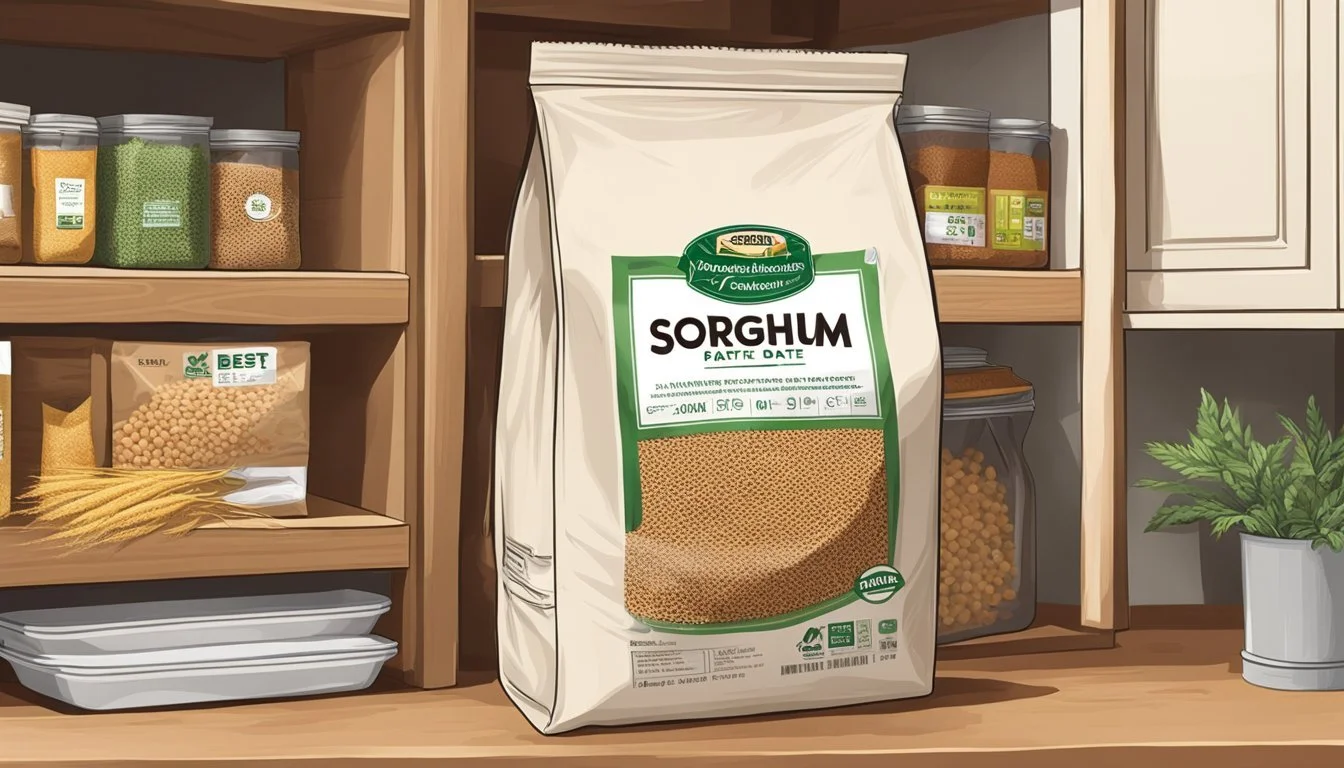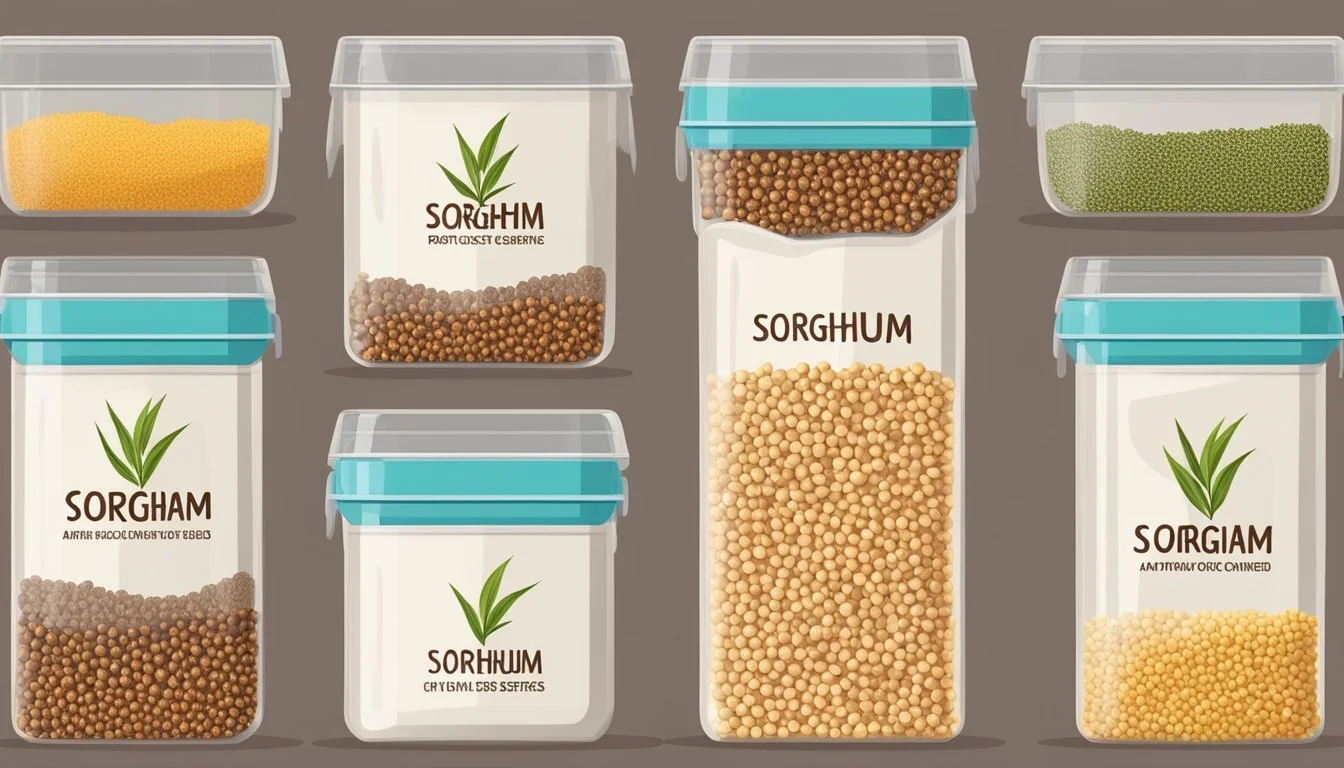How Long Does Sorghum Last?
Shelf Life and Storage Tips
Sorghum, a versatile and ancient grain, has been feeding civilizations for centuries and is gaining popularity due to its gluten-free and hearty nature. As with many grains, its shelf life is a point of interest for those looking to maintain a sustainable pantry. Whole sorghum grain, when stored under ideal conditions, can remain usable for up to three years. The grain thrives in a cool, dry environment and benefits significantly from being kept in an airtight container to ward off moisture and pests.
Turning sorghum into flour affects its longevity. Sorghum flour (how long does sorghum flour last?), because of its increased surface area and exposure, has a shorter shelf life compared to its whole grain counterpart. Normally, sorghum flour can be expected to last up about six months if stored properly. The key to extending its shelf life lies in how it is stored after milling. To maximize freshness, sorghum flour should be kept in a sealed container in a cool, dry place, away from any direct light or heat.
Origin and Background
The storied past of sorghum and its expansion from ancient grains in Africa to a global crop highlights its importance in agriculture. Its longevity owes much to its resilience and adaptability.
History of Sorghum
Sorghum originated in Africa, with the earliest evidence coming from Nabta Playa, near the Egypt-Sudan border, indicating cultivation as far back as 8,000 B.C. This ancient grain thrived in diverse African climates, leading to its spread from the Ethiopian highlands to the semi-arid regions of the Sahel. Archaeological findings in Sudan, dating from 3500 to 3000 B.C., suggest sorghum underwent domestication over 5,000 years ago, becoming a staple in areas such as the kingdom of Alodia.
The grain later traversed to other continents such as Asia, where it became established in countries including India and China. The journey of sorghum continued until it reached Australia, further demonstrating its versatility across various environments. Notably, its introduction to the United States is attributed to the global trade routes, and anecdotal records suggest Ben Franklin may have introduced broomcorn, a type of sorghum, to North America.
Global Production
Today, sorghum stands as a significant crop in global agriculture. It is cultivated extensively across different continents:
Africa: Remains a primary producer, with sorghum being a key food crop for many nations.
India and China: Both are major players in the production of sorghum, utilizing it for various uses including fodder and alcohol production.
Australia: Embraces sorghum primarily for animal feed and for the brewing industry.
United States: Adopts sorghum both for animal feed and as a grain for human consumption, with an increasing interest in gluten-free products.
This adaptable grain continues to play a critical role in providing food security and diversification in crop systems around the world.
Nutritional Value
Sorghum, a nutrient-dense whole grain, is rich in a variety of essential components part of a healthy diet. It is particularly noted for its high-protein and gluten-free status, making it a favorable alternative for those with dietary restrictions.
Health Benefits
Sorghum is an excellent source of protein, with about 10 grams per serving, contributing to muscle maintenance and growth. It also boasts a considerable amount of dietary fiber—about 7.5 grams per serving—supporting digestive health. The grain is naturally gluten-free, which makes it a safe choice for individuals with celiac disease or gluten intolerance. Sorghum is rich in essential vitamins and minerals, including B6, magnesium, phosphorous, and manganese, each playing a vital role in overall health and metabolic functions.
Comparing Grains
When compared to other grains, sorghum presents a strong nutritional profile:
Whole Grain Wheat: Higher in fiber, but not gluten-free.
Rice: Lower in protein and fiber than sorghum.
Quinoa: (What wine goes well with quinoa?) Similar protein content, but quinoa contains all nine essential amino acids.
Rye: Comparable in health benefits but contains gluten.
Oats: Similar in fiber but oats are often processed in facilities that handle wheat, risking gluten contamination.
Barley: High in fiber, contains gluten, and typically lower in protein.
Millet: Another gluten-free option, but generally lower in protein compared to sorghum.
Cultivation and Harvesting
Sorghum is a versatile crop that thrives in arid conditions, known for its drought-resistant qualities. The cultivation process from planting to harvest demands monitoring for optimal moisture levels to ensure a robust yield.
Growing Sorghum
Sorghum planting typically occurs between February and July, with variations depending on geographical location. The growth cycle starts from seeding, with grain sorghum and sweet sorghum being the primary types cultivated. As a drought-tolerant crop, sorghum's water requirement is less than that of similar crops. However, sufficient moisture during planting is crucial for germination. The seeds grow into plants usually ranging from 3-5 feet in height, boasting between 15-18 leaves.
During the growing phase, monitoring for diseases and pests is essential for maintaining plant health. The flag leaf emergence indicates the upcoming flowering stage, which commences 7-10 days later. This stage is critical for determining the success of both grain and sweet sorghum production.
Harvesting Techniques
Harvesting of sweet sorghum occurs about two weeks after reaching the milk stage. The canes are cut at ground level and stripped of leaves. The green canes are then processed to extract the sweet juice, which is cooked down to produce sorghum syrup (how long does sorghum syrup last?).
For grain sorghum, the plants mature when the moisture content in the grain drops to around 30 percent. The ideal time for harvest is when moisture content is below 25 percent, as higher moisture can lead to unthreshed heads or cracked grains during the process. Knowledge of the moisture content is key as it impacts the yield and quality of sorghum.
Harvesting techniques must adapt to the sorghum type and its current moisture content to maximize production and minimize loss. Whether harvesting grain or sweet sorghum, each type demands a specific method to safeguard the quality of the harvest.
Culinary Uses
Sorghum, a versatile and gluten-free grain, is increasingly popular in a variety of culinary applications, ranging from traditional dishes to innovative recipes.
Sorghum in Cooking
Sorghum finds its way into kitchens as a nutritious grain that can be used in its whole form or as a flour. In whole form, sorghum can be a great side dish or incorporated into soups and stews. It offers a neutral flavor that pairs well with a multitude of seasonings and ingredients. One can also pop sorghum just like popcorn, to create a light and healthy snack. Sorghum syrup is another product, often drizzled over baked goods or used to sweeten beverages.
Whole Grain: As a side dish, similar to rice or quinoa
Popped: A healthier alternative to traditional popcorn
In Soups/Stews: Adds a hearty texture
Sorghum Syrup: Used as a sweetener
Sorghum as a Substitute
Sorghum flour is a fantastic substitute for wheat flour in recipes, making it a staple for gluten-free cooking. It can be used to make a variety of baked goods such as bread, cakes, and cookies, maintaining a similar texture and taste to that of traditional flour. In brewing, sorghum is also a viable option for producing gluten-free beer. Its adaptability in recipes makes it an essential ingredient for those seeking gluten-free options without compromising on taste.
Flour in Baked Goods: Bread, cakes, cookies
Beer: A base for gluten-free beer varieties
Recipes: Adaptable to numerous gluten-free recipes
Storage and Preservation
Effective storage techniques are essential for maintaining sorghum's quality and maximizing its shelf life. Specific conditions and methods can prevent spoilage, ensuring the grain remains usable for an extended period.
Shelf Life of Sorghum
Whole grain sorghum, when stored correctly, retains its quality for up to three years. The key to prolonging its shelf life lies in the environment it is kept in; a cool, dry place away from direct sunlight is ideal. For instance, a pantry that maintains a consistent temperature is a suitable location. It is essential to store sorghum in airtight containers to safeguard against moisture and pests.
Flour made from sorghum, on the other hand, typically has a shorter shelf life. It can be maintained for up to six months if stored properly. Here again, an airtight container is crucial, and for added protection, placing the container in the fridge can help to preserve the flour's freshness.
Preventing Spoilage
To prevent sorghum from going bad, one must handle several factors:
Containers: Use airtight containers to shield the sorghum from oxygen and pests.
Moisture and Mold: Sorghum should be kept in environments with low humidity to prevent mold growth. The moisture content of the grain for long-term storage should generally not exceed 13 percent. In more humid climates, reducing the moisture content to 11 or 12 percent is advisable.
Temperature: Cooler temperatures reduce the risk of spoilage, but sorghum does not require refrigeration unless it's ground into flour. In that case, refrigeration can extend its usable life.
Sunlight: Store sorghum away from direct sunlight to prevent degradation of the grains.
Through proper drying techniques and attentiveness to the storage environment, one can significantly minimize the risk of spoilage and maintain the integrity of the sorghum grain.
Versatile Applications
Sorghum's adaptability extends far beyond the kitchen, showcasing its importance in both industrial spheres and non-culinary contexts. As an ancient grain, its applications highlight its versatility, meeting the demands of various industries.
Sorghum in Industry
Sorghum has become a mainstay in industries focused on animal feed and livestock feed due to its nutrient profile and gluten-free nature. Producers favor sorghum as it can thrive in arid conditions where other crops might fail. As an ancient grain, it brings a sustainable option to meet the dietary needs of a variety of animals.
Animal Feed: Sorghum is esteemed for its high-energy and nutritious composition, making it a popular choice for feeding cattle, poultry, and swine.
Cattle: Often incorporated into fodder.
Poultry & Swine: Utilized as a primary feed grain.
Non-Culinary Uses
Beyond its role in feeding livestock, sorghum's versatility shines through in its utility in non-edible products. Its sturdy stalks are traditionally used in the production of handmade brooms, and the plant's biomass serves as a renewable resource for bioenergy production.
Brooms: Sturdy sorghum fibers are bound together to create durable brooms.
Bioenergy: The stalks can be processed into biofuel, offering an eco-friendly energy source.
Sorghum's resilience and diversity position it as a robust crop that serves multiple roles, from sustaining livestock to contributing to sustainable energy solutions.








